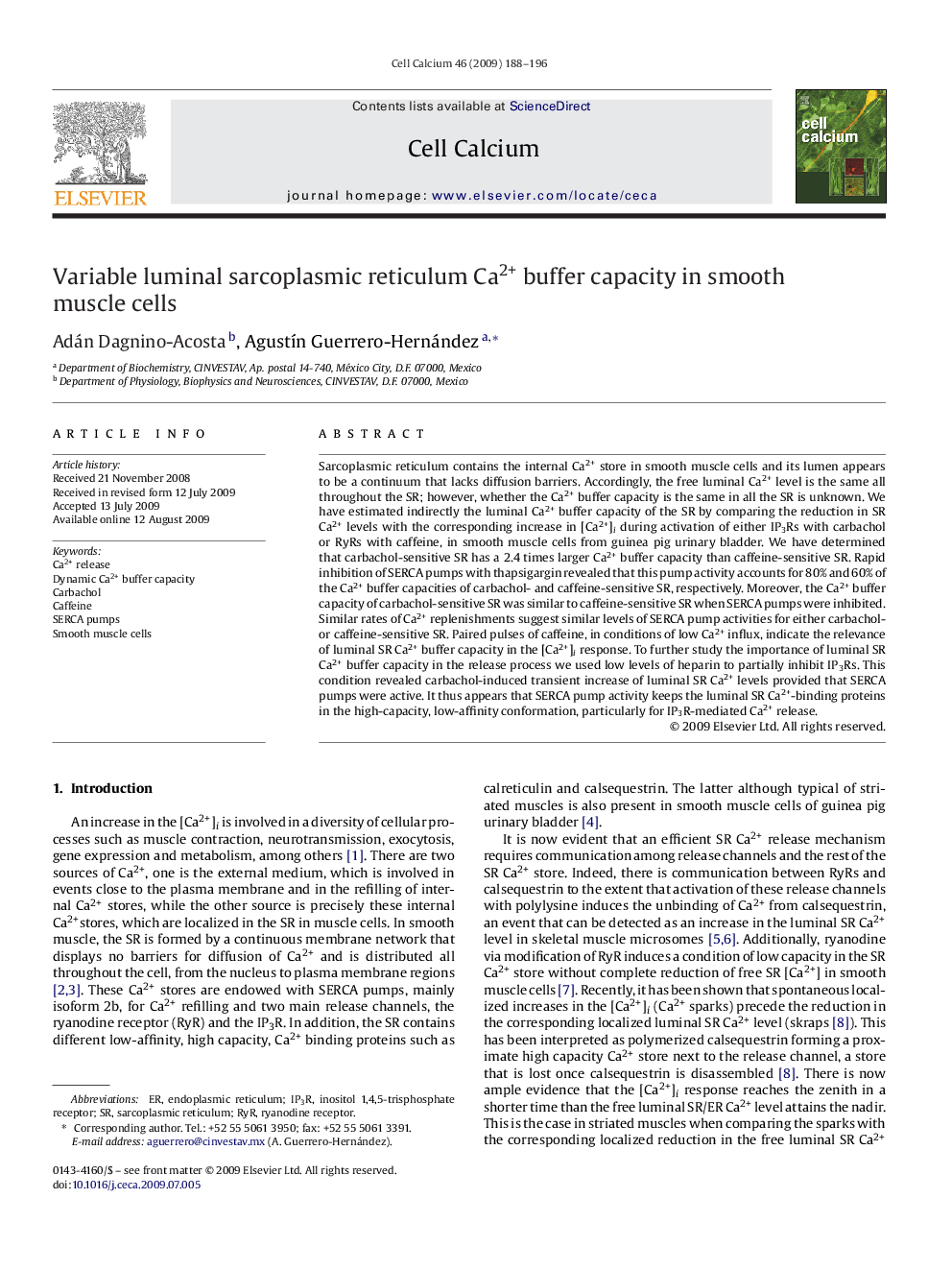| Article ID | Journal | Published Year | Pages | File Type |
|---|---|---|---|---|
| 2166367 | Cell Calcium | 2009 | 9 Pages |
Sarcoplasmic reticulum contains the internal Ca2+ store in smooth muscle cells and its lumen appears to be a continuum that lacks diffusion barriers. Accordingly, the free luminal Ca2+ level is the same all throughout the SR; however, whether the Ca2+ buffer capacity is the same in all the SR is unknown. We have estimated indirectly the luminal Ca2+ buffer capacity of the SR by comparing the reduction in SR Ca2+ levels with the corresponding increase in [Ca2+]i during activation of either IP3Rs with carbachol or RyRs with caffeine, in smooth muscle cells from guinea pig urinary bladder. We have determined that carbachol-sensitive SR has a 2.4 times larger Ca2+ buffer capacity than caffeine-sensitive SR. Rapid inhibition of SERCA pumps with thapsigargin revealed that this pump activity accounts for 80% and 60% of the Ca2+ buffer capacities of carbachol- and caffeine-sensitive SR, respectively. Moreover, the Ca2+ buffer capacity of carbachol-sensitive SR was similar to caffeine-sensitive SR when SERCA pumps were inhibited. Similar rates of Ca2+ replenishments suggest similar levels of SERCA pump activities for either carbachol- or caffeine-sensitive SR. Paired pulses of caffeine, in conditions of low Ca2+ influx, indicate the relevance of luminal SR Ca2+ buffer capacity in the [Ca2+]i response. To further study the importance of luminal SR Ca2+ buffer capacity in the release process we used low levels of heparin to partially inhibit IP3Rs. This condition revealed carbachol-induced transient increase of luminal SR Ca2+ levels provided that SERCA pumps were active. It thus appears that SERCA pump activity keeps the luminal SR Ca2+-binding proteins in the high-capacity, low-affinity conformation, particularly for IP3R-mediated Ca2+ release.
